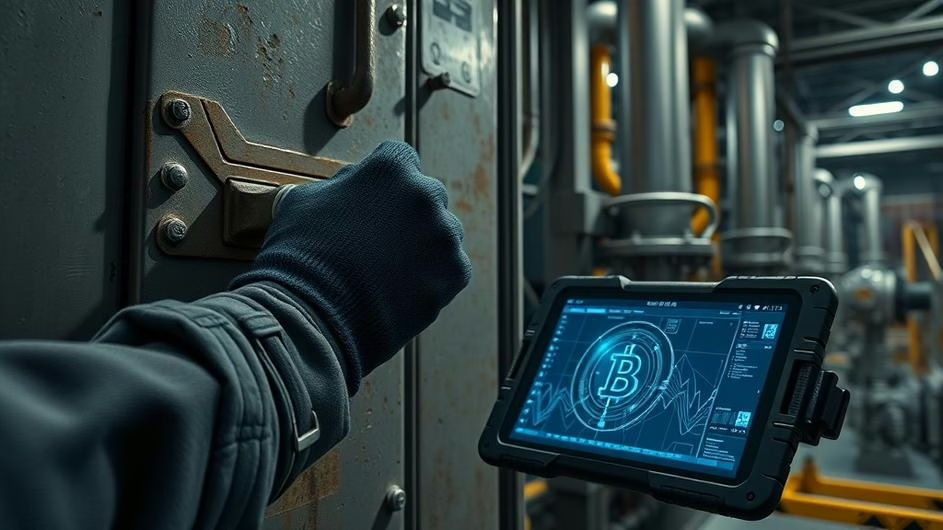
Biometrics, AI, and Identity: The New Frontier of Secure Digital Life
The digital identity landscape is shifting under our feet. While we’re still figuring out how to secure crypto wallets and protect ourselves from sophisticated cyber threats, a new wave of biometric and AI-powered security solutions is quietly reshaping how we think about authentication. But are these technologies ready for prime time, or are we rushing headfirst into another tech bubble?
Recent developments tell a fascinating story. AirTera’s DepartureCheck platform promises to revolutionize airport security, while Fabrix Security just raised $8 million to build AI-native identity management from scratch. Meanwhile, Apple’s Face ID started glitching after iOS 26 updates, reminding everyone that even the most polished biometric systems can fail when you need them most.
Sound familiar? It’s the same pattern we’ve seen with blockchain adoption, where promising technology meets real-world friction.
Aviation Gets the Biometric Treatment
Airports have always been testing grounds for cutting-edge security tech. Think about it: you’ve got millions of travelers, international regulations, and zero tolerance for security failures. It’s basically the ultimate stress test for any authentication system.
AirTera’s DepartureCheck represents the latest attempt to crack this nut. Working directly with the TSA, they’re deploying biometric screening that captures facial features and fingerprints for real-time identity verification. The goal? Shorter lines, better security, and happier passengers.
But here’s where it gets interesting for the tech crowd. The system isn’t just scanning faces and calling it a day. It’s managing device identifiers, cookies, and personal data while trying to maintain user privacy. That’s a delicate balance that reminds me of how cybersecurity professionals are navigating the increasingly complex threat landscape in 2025.
The aviation industry’s embrace of biometrics could signal broader adoption across other sectors. After all, if it works for airport security, why not for crypto exchanges or DeFi platforms?
AI-Native Identity Management Enters the Chat
While airports experiment with biometrics, the broader identity and access management (IAM) space is getting an AI makeover. Fabrix Security emerged from stealth with $8 million in seed funding and a bold claim: they’re building IAM from the ground up using large language models.
This isn’t just slapping ChatGPT onto existing security tools. Fabrix is training AI agents specifically for identity tasks, managing everything from human user access to service accounts and automated workflows. The platform continuously monitors, analyzes, and optimizes permissions across hybrid cloud environments.
Why does this matter? Traditional IAM relies on static rules that humans have to constantly update. It’s like trying to secure a DeFi protocol with hardcoded smart contracts that never adapt to new attack vectors. AI agents can potentially spot subtle permission issues that security teams miss, especially in complex environments spanning on-premise data centers and SaaS applications.
For crypto companies dealing with multi-signature wallets, custody solutions, and regulatory compliance, this kind of adaptive IAM could be game-changing. Imagine AI that automatically adjusts access controls based on transaction patterns or market volatility.
When Biometrics Go Wrong
Of course, no discussion about biometric security would be complete without acknowledging the elephant in the room: reliability. Apple’s Face ID started failing after the iOS 26 update, leaving users locked out of their devices until they manually reset the biometric data.
This isn’t just an inconvenience when your iPhone won’t unlock. Face ID protects everything from banking apps to crypto wallets. When biometric authentication fails, users often fall back to weaker security methods or get frustrated enough to disable protection altogether.
The incident highlights a crucial challenge for the entire security industry: building resilient systems that gracefully handle failures. iOS security issues have previously impacted crypto wallet security, and this Face ID glitch serves as another reminder that even Apple isn’t immune to authentication problems.
For developers building the next generation of secure applications, this means planning for biometric failures from day one. What happens when Face ID stops working? How do users regain access without compromising security? These aren’t hypothetical questions anymore.

The Data Responsibility Factor
Underlying all these security innovations is an ocean of personal data. Major corporations like Kier are reporting record profits partly driven by data-driven insights and analytics. User profiles, device characteristics, and behavioral patterns have become valuable business assets.
But with great data comes great responsibility. The companies building tomorrow’s identity systems need to balance innovation with privacy protection. That means transparent data collection practices, secure storage, and giving users real control over their information.
This challenge is particularly acute in the crypto space, where privacy and self-sovereignty are core values. How do you build effective biometric authentication while respecting user privacy? How do you leverage AI for security without creating new surveillance risks?
What’s Coming Next
The convergence of biometrics, AI, and identity management is accelerating. We’re seeing AI reshaping multiple industries simultaneously, and security is no exception. The question isn’t whether these technologies will become mainstream, but how quickly they’ll evolve and what challenges will emerge along the way.
For crypto traders and DeFi users, this evolution could mean more sophisticated wallet security, better fraud detection, and smoother user experiences. Imagine biometric authentication for hardware wallets or AI-powered risk assessment for large transactions.
For developers and entrepreneurs, the opportunity is enormous. The identity security market is ripe for disruption, especially as traditional username/password systems prove inadequate for high-stakes digital finance.
But success will require more than just cutting-edge technology. Companies need to build trust, ensure reliability, and respect user privacy. The winners will be those who can deliver security that feels both powerful and humane.
As we move deeper into 2025, expect to see more ambitious experiments in this space. AI’s expanding role in cybersecurity will likely extend beyond identity management to threat detection, incident response, and risk assessment.
The future of digital identity is being written now, one biometric scan and AI model at a time. Whether it leads to a more secure digital world or new privacy concerns will depend on how thoughtfully we implement these powerful technologies.
Sources
- “AirTera introduces DepartureCheck for improved aviation security,” Airport Technology, September 22, 2025
- “Fabrix Security emerges from stealth with $8M to launch AI-driven identity management platform,” Ynetnews, September 17, 2025
- “A major iPhone feature breaks after updating to iOS 26, but you can fix it right now!” PhoneArena, September 20, 2025
- “Kier breaks through £4bn turnover mark with 15% profit hike,” Construction News, September 16, 2025






























































































